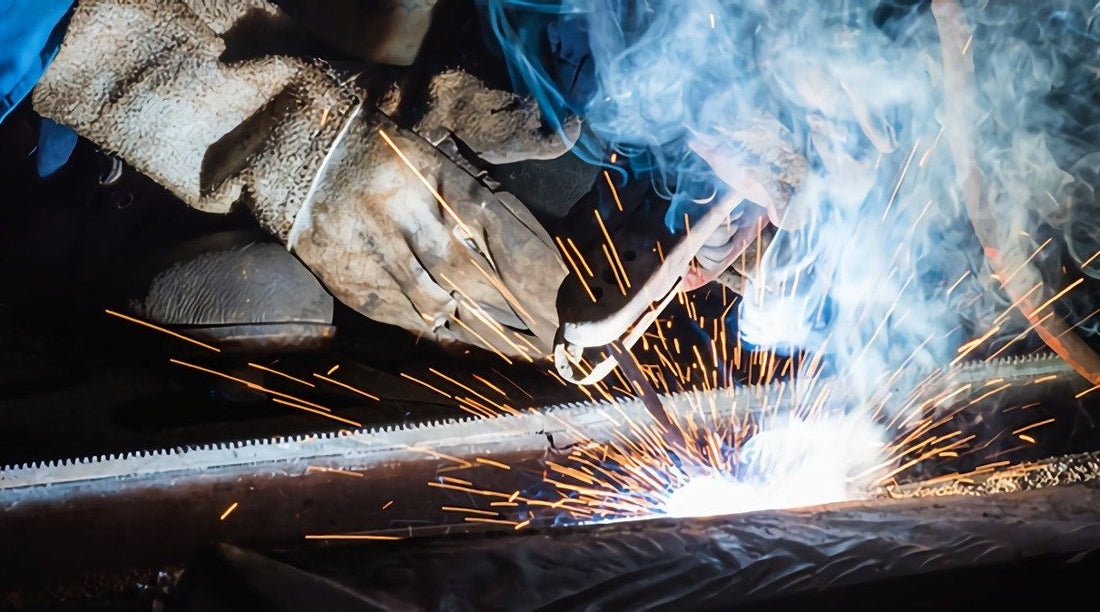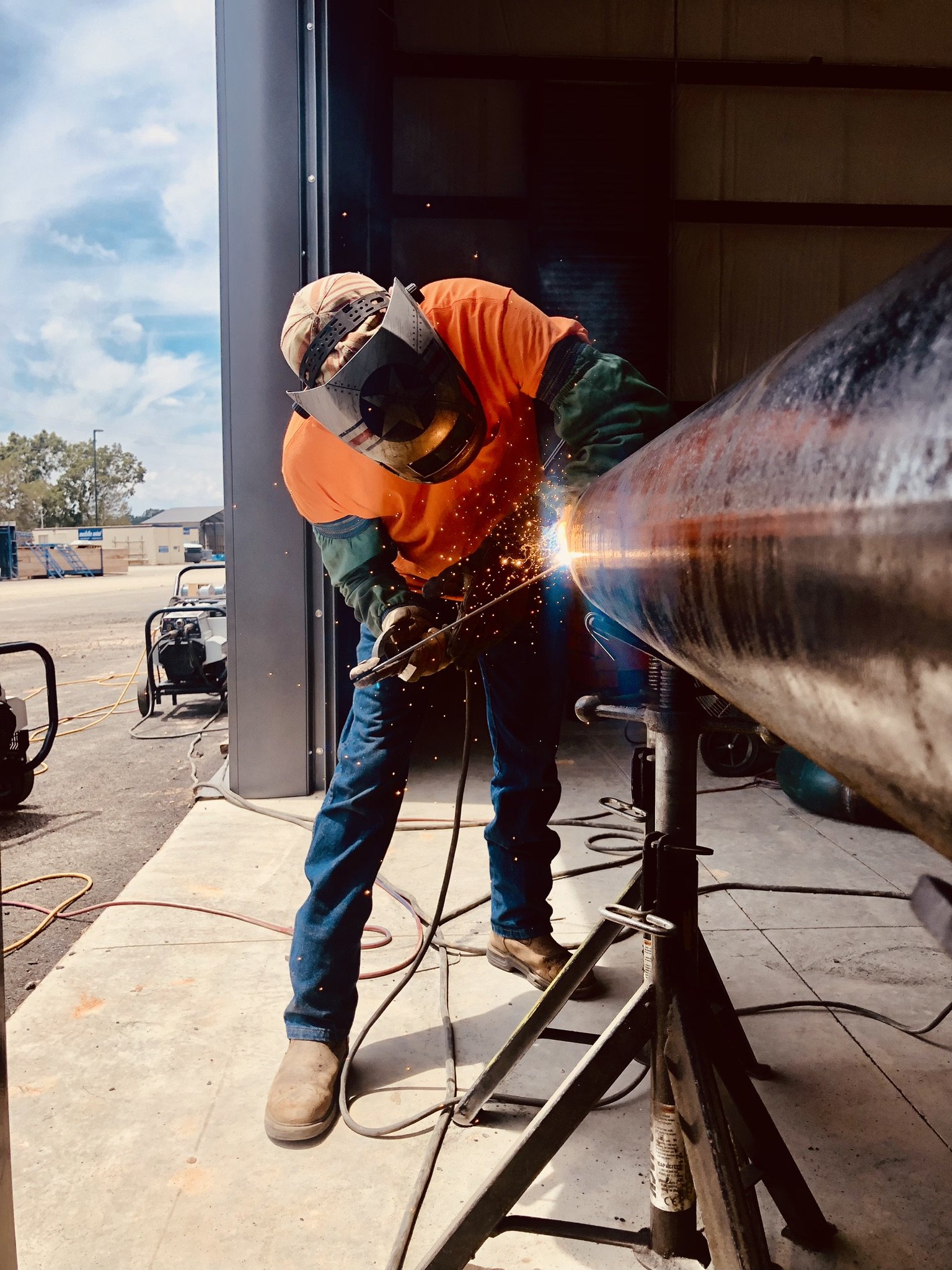Common Welding Fixing Issues and Exactly How to Address Them Efficiently
Welding repair work often encounter a range of concerns that can threaten the stability of the end product. Usual issues consist of poor penetration, porosity, and imbalance, among others. Each problem provides special obstacles that need certain methods for resolution. Recognizing these problems is important for welders aiming to enhance their end results and abilities. This conversation will certainly explore these usual welding repair problems and efficient approaches to resolve them.
Insufficient Penetration
Insufficient infiltration takes place when the weld steel stops working to totally fuse with the base product, resulting in weak joints and prospective structural failings. This issue often originates from not enough warm input, wrong electrode angle, or incorrect welding rate. Welders might come across poor penetration because of a miscalculation of the needed parameters for a particular product thickness or type. In addition, contamination on the base material's surface area can impede efficient bonding, exacerbating the trouble. To resolve insufficient infiltration, welders should assure suitable setups on their devices and keep a clean job surface area. Normal inspection of welds is suggested to identify any deficiencies early, allowing for timely corrections and the avoidance of compromised architectural honesty in bonded assemblies.
Porosity
Porosity is an usual issue in welded joints that shows up as tiny gas bubbles entraped within the weld steel. This problem can endanger the honesty of the weld, resulting in decreased stamina and possible failing under anxiety. Montana Mobile Welding and Repair Fabrication. Porosity generally occurs from contamination, dampness, or incorrect welding methods, which enable gases to get away into the molten weld pool. To deal with porosity, welders should guarantee proper surface prep work, preserve a clean workplace, and make use of appropriate welding criteria. In addition, selecting the appropriate filler product and shielding gas can mitigate gas entrapment. Normal assessment and testing of welds can aid recognize porosity early, guaranteeing prompt rehabilitative activities are taken, consequently protecting the top quality and dependability of the welded structure
Imbalance
Imbalance in welding can develop from numerous aspects, consisting of inappropriate arrangement and thermal development. Comprehending the origin causes is important for reliable resolution. Numerous improvement methods are offered to straighten elements and assure structural stability.
Root causes of Misalignment
Welding imbalance usually stems from a variety of underlying problems that can endanger structural stability. One primary reason is incorrect fit-up of elements before welding, which can cause spaces and uneven surface areas. Variants in thermal development throughout the welding process can also lead to distortion, especially if the materials being signed up with have different coefficients of growth. Furthermore, poor clamping and fixturing may stop working to hold components safely in area, bring about activity throughout welding. Improperly kept tools, including welding equipments and tools, may present incongruities in the weld bead, additional contributing to misalignment. Driver mistake, stemming from not enough training or experience, can additionally play a considerable role in developing misaligned welds.

Adjustment Strategies Available
Addressing imbalance efficiently needs a combination of rehabilitative methods tailored to the certain problems handy. One usual technique is the use of components or jigs to hold components in the right setting during welding, making sure regular positioning. In addition, preheating the products can help in reducing distortion and boost fit-up. For substantial imbalance, mechanical realignment techniques, such as using hydraulic jacks or clamps, can be used to deal with the position prior to welding. Post-weld warmth treatment may also be required to relieve anxieties brought on by misalignment. Careful inspection and adjustment throughout the configuration stage can prevent misalignment concerns from ending up being considerable troubles, promoting a smoother welding process and enhancing general architectural integrity.
Distortion
Distortion is a typical obstacle in welding that can occur from numerous elements, including unequal heating & cooling. Understanding the causes of distortion is essential for implementing effective avoidance methods. Resolving this concern not only improves architectural honesty yet likewise boosts the overall top quality of the weld.
Sources of Distortion
When subjected to the extreme warmth of welding, materials frequently undertake adjustments that can bring about distortion. This sensation mainly develops from thermal development and contraction throughout the welding procedure. As the weld area warms up, the material increases; upon air conditioning, it acquires, which can produce interior anxieties. In addition, uneven home heating across a work surface can exacerbate these anxieties, leading to warping or flexing. The sort of product additionally plays a substantial duty; metals with varying thermal conductivity and coefficients of expansion might react in a different way, leading to unforeseeable distortions. Poor joint style and inadequate fixturing can add to misalignment during welding, enhancing the chance of distortion. Understanding these reasons is essential for reliable welding repair service and prevention approaches.
Avoidance Techniques
Reliable avoidance methods for distortion throughout welding emphasis on regulating warm input and making sure appropriate joint style. Preserving a regular warm input helps to lessen thermal expansion and tightening, which can result in distortion. Utilizing methods such as preheating the work surface can also minimize the temperature level gradient, advertising consistent home heating. In addition, picking appropriate joint styles, such as T-joints or lap joints, can improve stability and decrease stress and anxiety focus. Executing proper fixturing to protect the work surfaces in area further help in keeping placement throughout the welding process. Finally, staggered welding sequences can disperse warm more uniformly, protecting against localized distortion. By applying these approaches, welders can considerably decrease the possibility of distortion and improve the total quality of their welds.
Fracturing
Breaking is an usual issue experienced in welding repair services, frequently arising from numerous variables such as inappropriate cooling rates, product selection, or poor joint preparation. The occurrence of fractures can substantially compromise the integrity of the weld, leading to potential failings throughout operation. To address this problem, welders must initially assess the origin causes, guaranteeing that materials are suitable and suitably selected for the certain application. Additionally, managing the cooling price throughout the welding procedure is crucial; rapid air conditioning can generate stress and anxiety and lead to fracturing. Correct joint design and preparation additionally add to lessening the danger. Applying these approaches can boost weld high quality and toughness, ultimately minimizing the probability of breaking in completed weldments.

Incomplete Combination
A significant problem in welding repairs is insufficient combination, which happens when the weld metal does not properly bond with the base material or previous weld passes - Montana Mobile Welding and Repair. This defect can bring about weak points in the joint, possibly endangering the integrity of the bonded structure. Factors adding to insufficient combination consist of not enough warm input, inappropriate welding method, and contamination of the surface areas being joined. To address this issue effectively, welders need find this to guarantee appropriate pre-weld cleansing and surface preparation, in addition to readjust their welding criteria to attain ample infiltration and blend. Normal examination during the welding procedure can additionally help recognize incomplete combination early, allowing for prompt restorative steps to enhance the total high quality of the weld
Overheating
While welding repair services can improve structural stability, overheating offers a significant challenge that can lead to product degradation. Excessive warmth throughout welding can change the mechanical buildings of metals, causing lowered strength, enhanced brittleness, and warping. This phenomenon is particularly critical in high-stress applications where architectural reliability is extremely important. Recognizing overheating can include this post aesthetic examinations for discoloration or distortion, in addition to keeping track of temperature during the welding process. To minimize the risks connected with overheating, welders ought to use proper techniques, such as regulating warmth input, adjusting traveling rate, and using appropriate filler materials. Additionally, implementing pre- and post-weld warm therapies can help restore material properties and improve the total high quality of the fixing, guaranteeing lasting efficiency and security.
Regularly Asked Concerns
What Are the Usual Indications of a Welding Flaw?

Just How Can I Check My Welds for Top quality?
To check welds for high quality, one can utilize aesthetic examinations, ultrasonic testing, and radiographic techniques. Each method assures structural honesty, determines defects, and validates adherence to specified requirements, ultimately improving the integrity of the bonded joints.
What Security Preventative Measures Should I Take While Welding?
When welding, one ought to prioritize security by using proper personal protective devices, making certain correct ventilation, securing flammable materials away, preserving a tidy work space, and knowing surroundings to stop injuries and accidents.
Can I Fix a Weld Without Remodeling the Entire Joint?
Fixing a weld without renovating the whole joint is feasible, relying on the damage (Montana Mobile Welding and Repair). Methods such as grinding, including filler product, or making use of a welding process can successfully resolve specific problems while protecting the surrounding framework
What Equipment Are Vital for Efficient Welding Services?
Essential devices for effective welding repairs include a welding equipment, cable brush, grinder, safety equipment, clamps, and filler products. Each tool plays an important role in making certain top quality and security during the fixing procedure. Porosity typically develops from contamination, wetness, or incorrect welding techniques, which permit gases to leave right into the liquified weld swimming pool. Badly kept devices, consisting of welding devices and tools, may present variances in the weld bead, additional adding to misalignment. When subjected to the intense warmth of welding, materials typically undergo changes that can lead to distortion. Cracking is an usual issue encountered in welding repair work, usually resulting from metal man welder different aspects such as incorrect air conditioning prices, product option, or poor joint prep work. A considerable issue in welding repair work is incomplete fusion, which occurs when the weld metal does not adequately bond with the base material or previous weld passes.